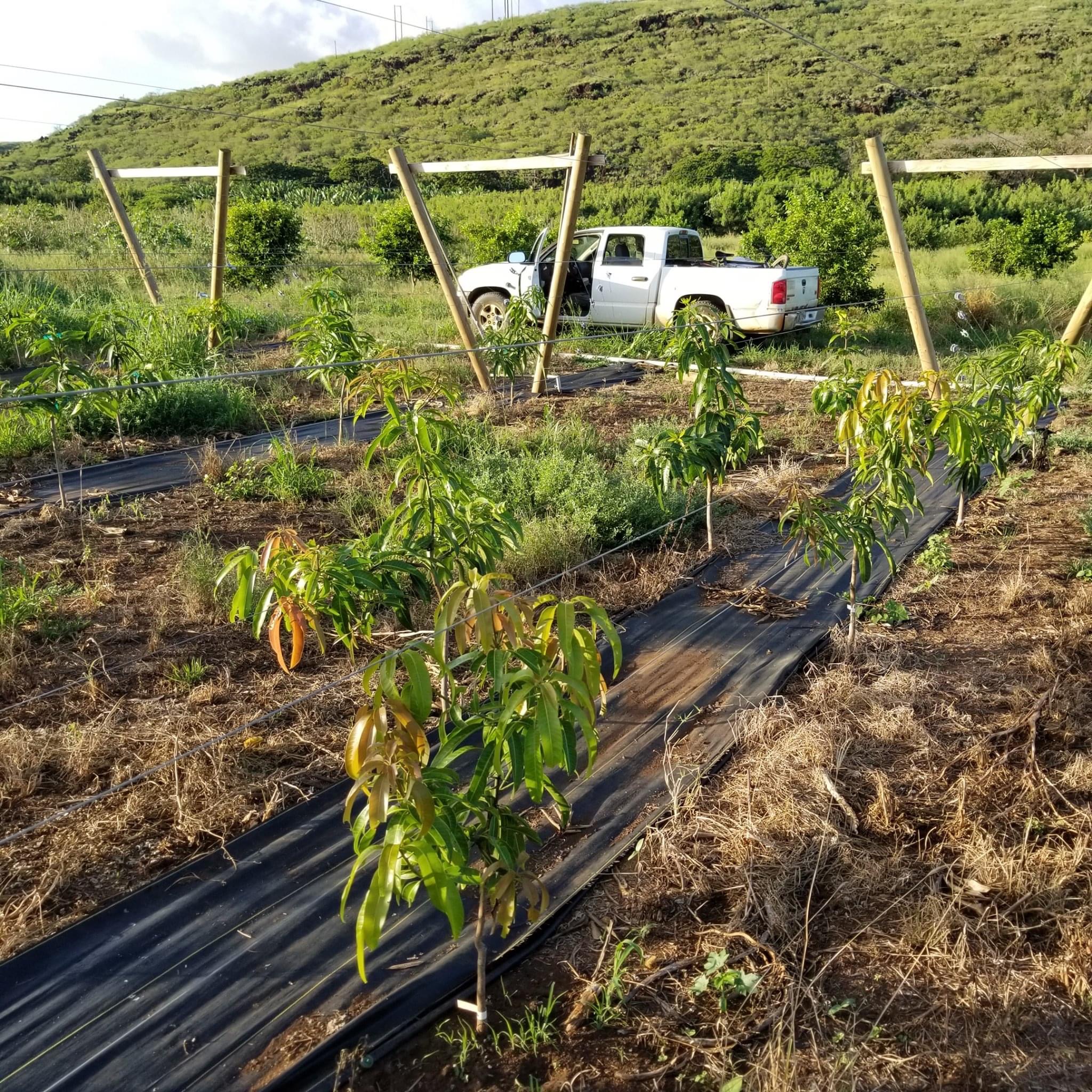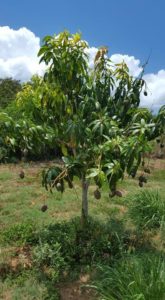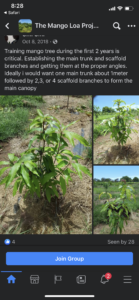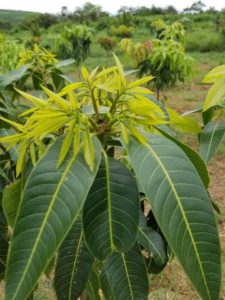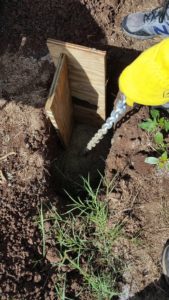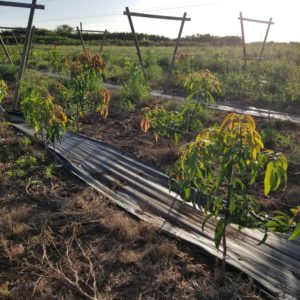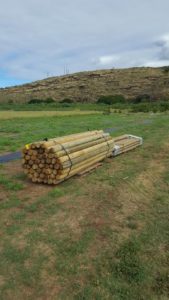The Fruit of Their Labor
Umi and Kaʻiulani Martin with their son, Hāloa, daughter, Kiʻiwai, and their faithful ʻilio. – Photo: Courtesy[/caption]
“The pandemic has changed local farming. There is a greater priority on buying local and supporting local businesses. Food banks are buying from local farmers and we are doing things that we have talked about doing for years.”
– Umi Martin, of Umi’s Farm and Umi’s Store.
Martin runs their 18-acre farm and Kaʻiulani runs a massage therapy business connected to their mom and pop store which carries snacks, ice, cold drinks, hunting supplies, local crafts, and produce from their farm.
“My wife and I always joked that we were the greatest underachievers,” he laughed. “Now all of a sudden, we are working day and night.”
In 2006, the Martins started a taro patch on their family’s 1-acre kuleana land parcel. For about two years they also grew fruits and vegetables, which they sold at the local famers’ markets.
“I attribute that time to getting us where we are today,” Martin reflected. “It allowed me to learn without pressure. If you know farming, you know it’s hard to be successful and learn at the same time.”
Martin researched innovative farming methods used in India, Japan and Australia, such as ultra high-density farming and the Open Tatura Trellis system.
His hard work and persistence paid off. In 2016, Martin was able to secure a lease on state lands to begin a tropical fruit orchard. While the original lease with the Agricultural Development Corporation (ADC) was for 5 acres, the lease was later expanded to encompass an 18-acre parcel.
“It’s hard to get land these days. I think it was kind of an experiment of how ADC can work with us small guys. We exceeded their expectations and planted 100% of the acreage in two years, so we asked for the remainder of the field,” recalled Martin.
Support from OHA Mālama Loans provided the funding needed to start their store; a second OHA Mālama Loan helped finance the irrigation system needed to start his farm.
Martin was also able to secure a grant with the Sustainable Agriculture Research and Education (SARE) program to start The Mango Loa Project. Using the high-density trellis farming method, he successfully planted 550 mango trees on a single acre.
“With this method, the trees do well under heavy pruning. It makes the job easier because we are working with trees that are about 8-feet tall. All the picking is done from the ground; picking by hand reduces damage to the fruit. And the trellises help protect the trees from the elements. With a 30-foot tree, there is no way to monitor disease, so keeping the trees small helps.”
Martin has about 650 mango trees producing fruit. Next year, he estimates there will be 800. He grows four varieties of mango, including the Rapoza, known for its beautiful color; but Martin’s favorite is the White Pirie – delicious but difficult to grow.
“There is no such thing as easy farming,” laughs Martin. “But I tell all my friends that if you are not using high-density farming, then you are using last century’s methods.”
As vice president of the Hawaiʻi Tropical Fruit Growers Association, Martin is able to share what he has learned. He believes teaching the next generation to farm is key to the industry’s success. You can follow him on his Facebook page, The Mango Loa Project.
“Incubator programs like GoFarm Hawaiʻi give our young people the chance to learn and see what they want to do. We spent the last generation convincing our young people to not go into farming; now we have the chance to rebuild agriculture.”
Martin believes agriculture should be the foundation of our economy instead of tourism. He hopes the state will do more to support and protect the local agricultural industry. For example, crop theft laws need to be tightened and enforced. It is difficult to prosecute crop theft, which has wiped out entire family farms.
He also sees the need to expand the supply chain, from processing to distribution. “There needs to be a packing house that all farmers can send their produce to.”
But for now, he is hoping Umi’s Store will be a place local customers can depend on to get the best mangoes around.
His vision for the future of Hawaiʻi ag? “Produce enough food to sustain the people of Hawaiʻi. Local farmers should be providing for our local schools. We need the food banks to turn to local farmers to help us feed our people. We have land open and fallow because of sugar farming. I hope to see more small farmers and more co-ops. It took a pandemic to help us think outside the box. Now, let’s work towards a better future.”

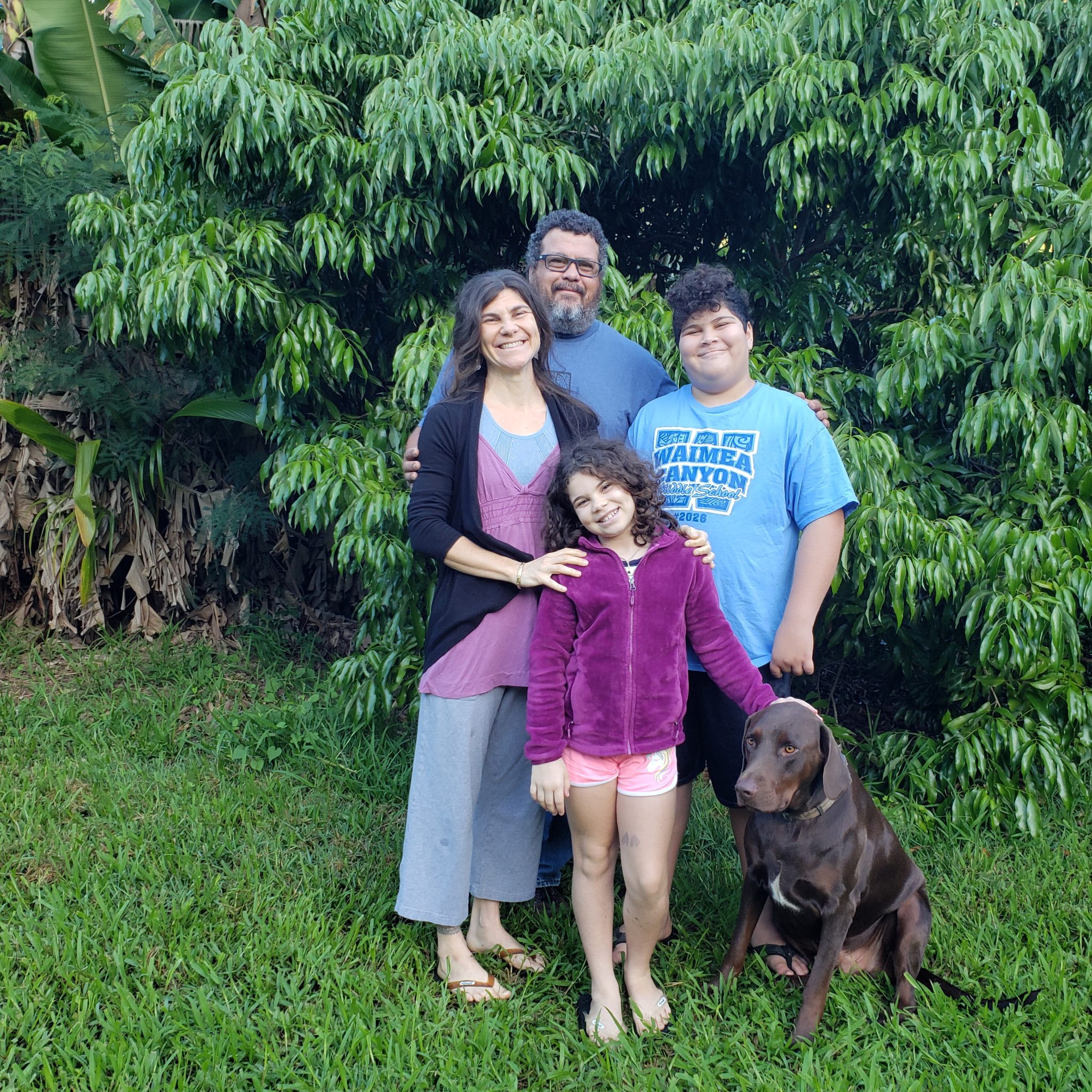 Umi and Kaʻiulani Martin with their son, Hāloa, daughter, Kiʻiwai, and their faithful ʻilio. – Photo: Courtesy[/caption]
Umi and Kaʻiulani Martin with their son, Hāloa, daughter, Kiʻiwai, and their faithful ʻilio. – Photo: Courtesy[/caption]
